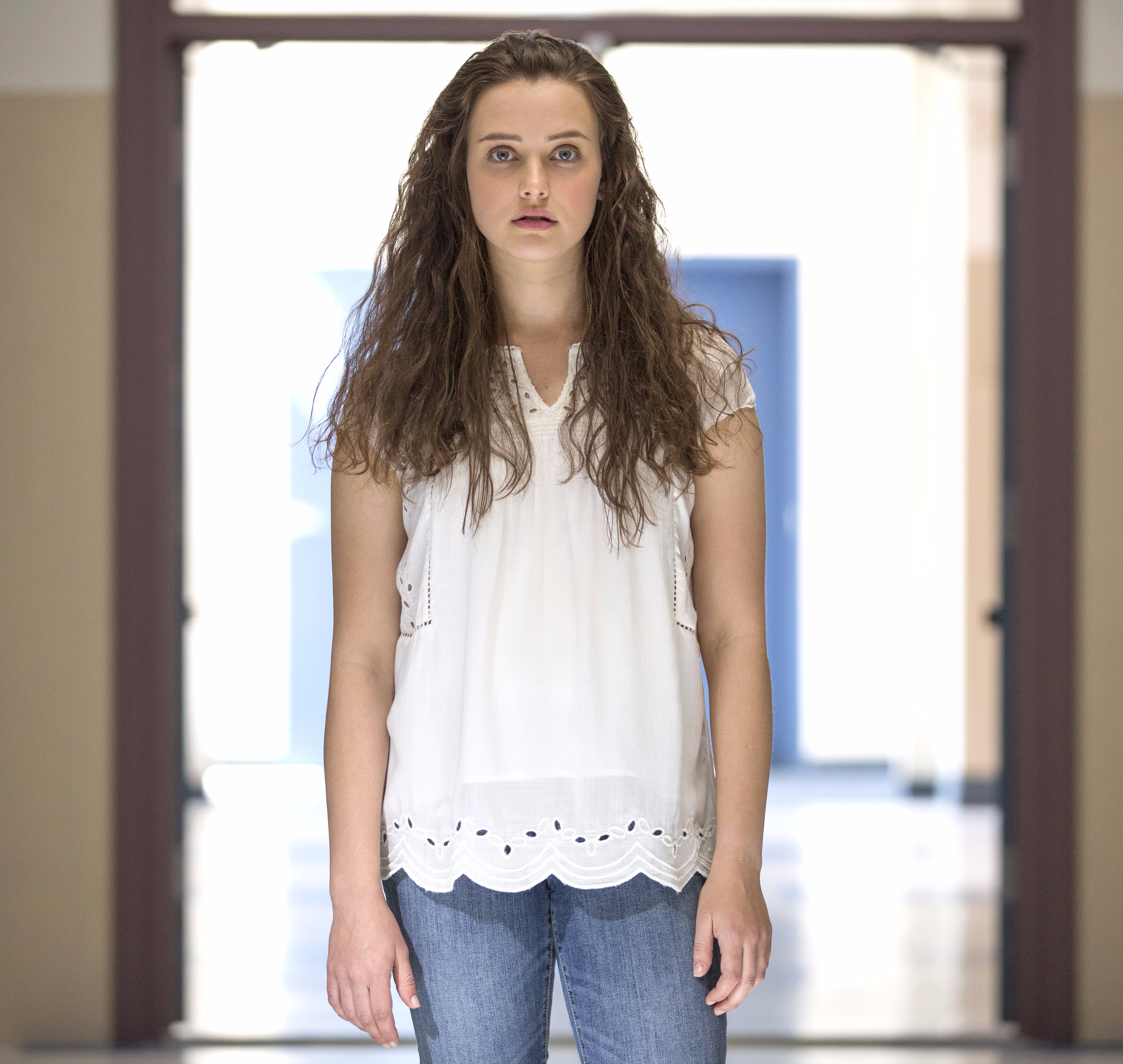
Hannah Baker, portrayed by Katherine Langford, in “13 Reasons Why.” Courtesy Netflix
As the second season of 13 Reasons Why prepares for release in 2018, there are new concerns from experts about potential risks posed by the sensationalized treatment of youth suicide. In Season 1 of the show, which is distributed by Netflix and filmed in part at Analy High School in Sebastopol, the series graphically depicted a bathtub suicide, and included scenes of bullying and rape in wrenching detail.
There have been several reports of teens committing suicide after watching the show, which has attached warnings and resources at the beginning and end of each episode.
Tim Paulson, a school psychologist for Davis Joint Unified School District, worries that 13 Reasons Why could glorify suicidal behavior, which may lead to an increase in suicides. He encourages educators to watch the show to better understand the challenges students face growing up in today’s world — and to increase awareness of the problem and implement prevention strategies.

Tim Paulson
“Every school district has suicides,” says Paulson, a member of the Davis Teachers Association and the California Association of School Psychologists. “It’s very real.”
The National Association of School Psychologists (NASP) discourages troubled teens from viewing 13 Reasons Why, but offers guidelines for educators to engage in supportive conversations with students who may be affected or traumatized, as well as advice to prevent or deal with harmful behaviors.
“Educators need to be aware of these guidelines,” says Paulson. “There could be a new wave of suicidal behavior related to Season 2 — or from an economic downturn in the foreseeable future that puts pressure on teens and their families.”
NASP Guidance for Educators
1. While NASP does not recommend that all students view 13 Reasons Why, it can be appreciated as an opportunity to better understand young people’s experiences, thoughts and feelings. Youth who view this series will need supportive adults to process it. Take this opportunity to both prevent the risk of harm and identify ongoing social and behavior problems in the school community that need to be addressed.
2. Help students articulate their perceptions when viewing controversial content, such as 13 Reasons Why. Difficult issues portrayed do occur in schools, and it is important for adults to listen, take adolescents’ concerns seriously, and be willing to offer to help.
3. Reinforce that mental health professionals are available to help. Emphasize that the behavior of the second counselor in the series (who ignored warning signs) is understood by virtually all school mental health professionals as inappropriate. It is important that all school mental health professionals receive training in suicide risk assessment.
4. Make sure parents, teachers and students are aware of suicide risk warning signs. Always take warning signs seriously, and never promise to keep them secret. Establish a confidential reporting mechanism for students. Common signs include:
- Suicide threats, both direct (“I am going to kill myself,” “I need life to stop”) and indirect (“I need it to stop,” “I wish I could fall asleep and never wake up”). Threats can be verbal or written, and they are often found in online postings.
- Giving away prized possessions.
- Preoccupation with death in conversation, writing, drawing and social media.
- Changes in behavior, appearance, hygiene, thoughts or feelings. This can include someone who is typically sad suddenly becoming extremely happy.
- Emotional distress.
5. Students who feel suicidal are not likely to seek help directly. However, parents, school personnel and peers can recognize the warning signs and take immediate action to keep the youth safe. When a student gives signs they may be considering suicide, take the following actions:
- Remain calm, be nonjudgmental, and listen. Strive to understand the emotional pain that has resulted in suicidal thoughts.
- Avoid statements that might be perceived as minimizing the student’s emotional pain: “You need to move on,” “Get over it.”
- Ask the student directly if they are thinking about suicide.
- Focus on your concern for their well-being and avoid being accusatory.
- Reassure the student that there is help and they will not feel like this forever.
- Provide constant supervision. Do not leave the student alone.
- Get help. Never agree to keep a student’s suicidal thoughts a secret. Instead, school staff should take the student to a mental health professional. Parents should seek help from school or community mental health resources. Students should tell an appropriate adult, such as a school psychologist, administrator, parent or teacher.
6. Determine how to handle memorials after a student has died. Promote memorials that benefit others (donations for a suicide prevention program) and activities that foster a sense of hope and encourage positive action. The memorial should not glorify, highlight or accentuate the individual’s death. It may lead to imitative behaviors.
7. Reinforcing resiliency factors can lessen the potential of risk factors that lead to suicidal ideation and behaviors. Once a child or adolescent is considered at risk, schools, families and friends should work to promote:
- Family support and cohesion, including good communication.
- Peer support and close social networks.
- School and community connectedness.
- Adaptive coping and problem-solving skills, including conflict resolution.
- Self-esteem, and a sense of purpose.
- Easy access to effective medical and mental health resources.
8. Strive to ensure that all student spaces on campus are monitored and that the school environment is truly safe, supportive and free of bullying.
9. If needed, ask for support from your district-level crisis team.
The Discussion 0 comments Post a Comment